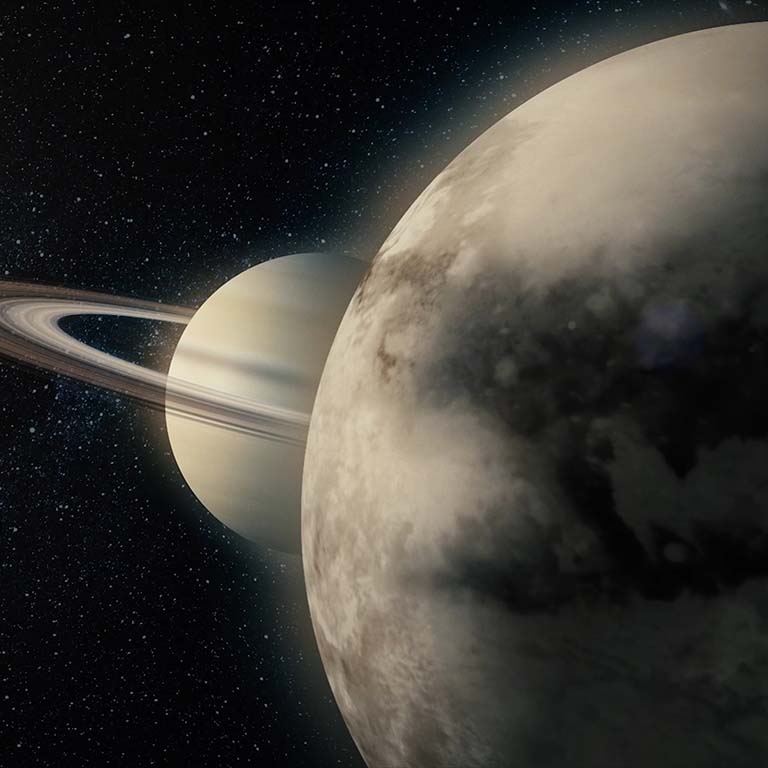For immediate release: September 1, 2021
BLOOMINGTON, Ind. -- The two giant planets, Jupiter and Saturn, will be well placed for viewing during September. Saturn will be first to appear, standing 14 degrees high in the southeast at sunset. Jupiter will follow Saturn across the sky 18 degrees farther east in the constellation Capricornus. Both planets will be best viewed from 10 p.m. onward when they will be high in the south, bright and large enough for detailed viewing with telescopes.
Saturn's rings will be tilted toward Earth at an angle of 19 degrees. Titan, Saturn's largest moon, will be north of the planet Sept. 3 and 19 and south of the planet Sept. 11 and 27. Jupiter will be brighter than Saturn, showing in a telescope surface features that move visibly within 10 minutes, making the planet popular with observers. Any telescope will show Jupiter's four bright moons, first reported by Galileo.
Venus will be close to the western horizon during September evenings, but its brilliance will make it easy to spot. The dazzling planet will be 11 degrees high in the southwest a half hour after sunset early in the month. Binoculars may let you see the bright star Spica less than 2 degrees south of the planet as darkness falls Sept. 4. By the end of the month, Venus will set nearly two hours after the sun.
Mercury will be very low in the western sky during September, setting less than an hour after the sun for observers at mid-northern latitudes.
Mars will be too close to the sun to be seen during September. It will return to the morning sky in December.
Equinox
The sun will arrive at the September equinox on Sept. 22 at 3:21 p.m. EDT, marking the start of autumn in the Northern Hemisphere and spring in the Southern Hemisphere. For the next six months in the Northern Hemisphere, the nights will be longer than the days.
Moon phases
The moon will be new on Sept. 6, at first quarter on Sept. 13, full on Sept. 20, and at third quarter on Sept. 28.
Author: Hal Kibbey Email: hkibbey [at] gmail.com


 The College of Arts
The College of Arts